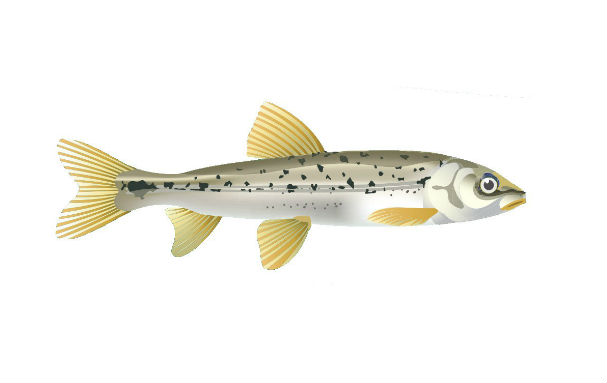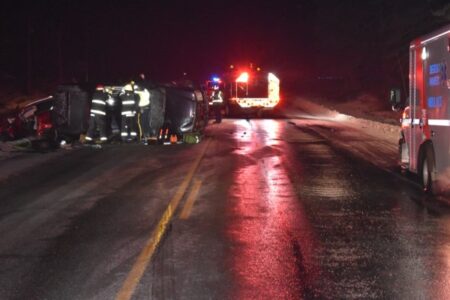KETTLE RIVER Q&A: Small fish with big importance for the Kettle River.
Unless you are really into fish, you have probably not heard of the Speckled Dace.
The Speckled Dace (Rhinichthys osculus) is a small minnow (5-9 cm) that is relatively abundant in the Kettle River watershed and in many waterways in the western United States.
The Speckled Dace is a small minnow found in the Kettle River watershed and western United States. Illustration by Nichola Lytle, Pink Dog Designs
But the Kettle River system is the only place in Canada that the Speckled Dace occurs, and if its Canadian population were to be severely harmed, the presence of Cascade Falls would prevent it from naturally returning to the watershed. This fact has led to the listing of the Speckled Dace as Endangered in Schedule 1 of Canada’s Species at Risk Act (SARA).
Fisheries and Oceans Canada and the Province of British Columbia are currently working on a Recovery Strategy for the Speckled Dace. The draft strategy, released for public consultation this fall, identified critical habitat areas in the West Kettle near Beaverdell, the main Kettle in the Christian Valley, and the Granby River near Burrell Creek. The main strategies are to improve key knowledge on the life cycle and habitat use of Speckled Dace and maintain current distribution and abundance within natural ranges.
Several studies have confirmed that Speckled Dace are widely distributed in the watershed, with a population of over 900,000 mature fish. It makes use of riffles, runs and pools, eating aquatic insects and algae with its sucker-like mouth. Little is known about their spawning behaviour, but it is thought to occur in mid-July, with fry appearing in early August.
Some of the main threats to Speckled Dace are low river flows and siltation from road building, forestry, and livestock access. According to Lesley Peterson, a biologist with Trout Unlimited Canada in Calgary, “these issues are also detrimental to Rainbow Trout which not only require cold, clean water but also healthy and functioning riparian areas.”
The geographic isolation has also made the population upstream of Cascade Falls genetically unique. But apart from that most anglers would find their greatest value in their place in the food chain for larger fish-eating predators like adult rainbow trout.
Because of their interest in supporting healthy aquatic ecosystems and rainbow trout in the Kettle River, the Okanagan Chapter of Trout Unlimited Canada is supporting projects in the Kettle River, in partnership with the Regional District of Kootenay Boundary, Golder Associates, Granby Wilderness Society, and other partners.
Through the efforts of their Okanagan Chapter, Trout Unlimited Canada has received funding through the RBC Blue Water Project to conduct enhancement and restoration projects along the Kettle River system. “Through education, stewardship, and on-the-ground projects, our goal is to improve the outlook for not only Speckled Dace, but Rainbow Trout and the Kettle River itself,” said Peterson.
The team is currently identifying potential project sites and preparing background information on sediment reduction and riparian habitat restoration. They are applying for further funding to support the project but would like to initiate work in at least one site by the spring of 2015.
—Graham Watt is coordinator of the Kettle River Watershed Management Plan for the Regional District of Kootenay Boundary. Contact Graham at plan@kettleriver.ca or 250.442.4111.

























